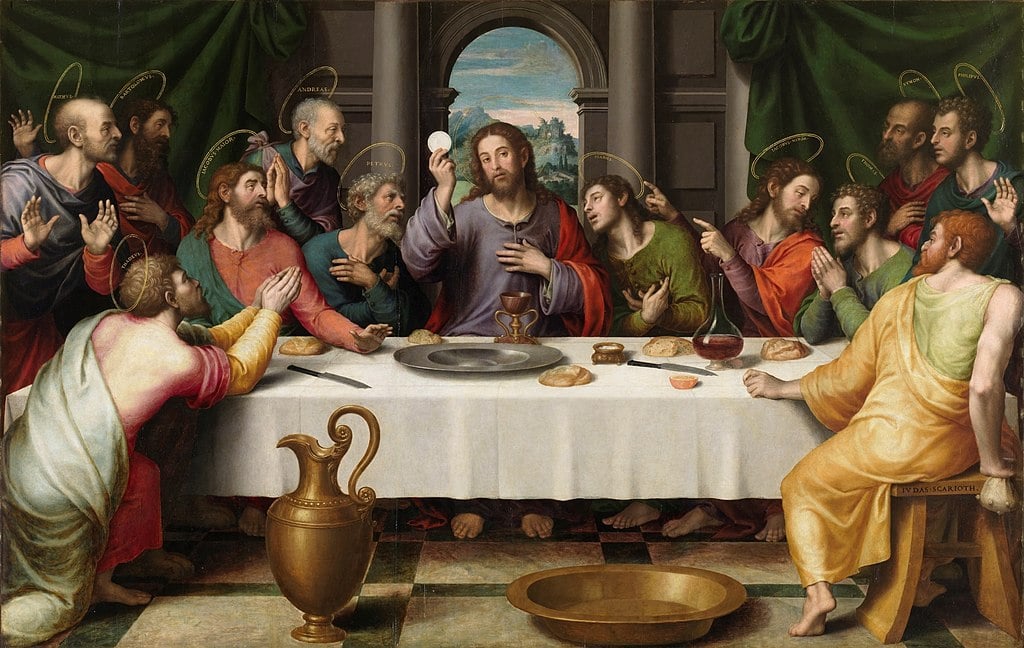
In society, mentions of the “Last Meal” or “Last Supper” refer to two quite specific events. The first is secular and refers to the last meal of the unlucky prisoners who find themselves on death row. The second is the biblical Last Supper, also known as the “Lord’s Supper,” which has its roots deep in Christianity.
Most believe it is the latter from which the former originated. Yet, there is now some proof that it far pre-dates the final meal Jesus Christ shared with his twelve apostles.
Hangman’s Meal
In the United States today, there are more than twenty-seven states, including American Samoa, that still practice the death penalty. The U.S. Military may also use capital punishment as a penalty. In theory, this applies only to cases involving aggravated murder.
Lethal injection is normally the preferred method although we sometimes still make reference to “the hangman’s meal.” Otherwise, it’s the electric chair or a firing squad that is the method used in the death penalty. Since its inception in the U.S., over 1,552 women and men have died in this manner—many innocent or disproportionally of ethnic minorities.
Many first-world nations have for many years severely criticized the United States for its death row policy, as it is one of the only few countries besides Belarus to continue practicing this form of punishment. In fact, the European and World Day against the Death Penalty took place on October 10th of this year during which the EU and the European Council firmly reiterated their absolute antipathy towards the implementation of the death penalty at any and all times.
Yet, it was not exactly always this way. There is some evidence of execution taking place in the Iron Age in Denmark, and the victim even seems to have been served a meal. Indeed, they used the expression “Hangman’s Meal” in 18th century Germany.
The “Hangman’s Meal” was a banquet shared by judges, lawyers, local dignitaries, clergy, and executioners of the condemned. Furthermore, unlike most of the last meals prepared in the U.S., they were virtually feasts. Evidently in Nuremberg, for example, they often provided an entire goose to the unlucky individual who had somehow regrettably found himself within hours of a dangling rope, a meal much more exciting than eating a steak all alone in a prison cell in Alabama- if getting a good meal makes any difference at all when one is about to be executed.
Cold comfort food
Mercer University Law School recently shared a publication entitled “Cold (Comfort?) Food: A Systematic Examination of the Rituals and Rights of the Last Meal.” In the paper, author Sarah Gerwig-Moore explains how the prisoner was actually called on to “participate in a scripted exchange in which they were told to seek forgiveness for their actions.” Furthermore, much like Christ’s Last Supper, the shared partaking in the meal became symbolic of both mutual forgiveness and acceptance.

Concurrently, German contemporaries in London shared the same type of sumptuous last meals as well with those sentenced to death. The British were even righteous and right-minded enough to allow outside visitors to participate.
Their wit was also quite apparent, as this normally took the form of a procession leading straight to the neighborhood pub for a “a great bowl of late to drink at their pleasure, as their last refreshment in life,” which one would assume was a nice tall pint of Shepherd Neame.
Sadly, those who fled in exile to the United States from the Great British Empire took the practice along with them, for it was the Puritans in Massachusetts who held lavish last meals for those branded with a scarlet letter in homage to the Last Supper of the Saviour Jesus Christ and his twelve faithful followers.
But where did the practice itself originate?
No hunger in Hades
The answer is Ancient Greece. According to the faculty publication from Mercer, the Ancient Greeks fed their prisoners well prior to their execution in order to ensure their access to the underworld without fear of being haunted after by hungry spirits.
This is slightly more self-serving than in later ages—yet sympathetic, nevertheless. Besides, who’s to say that the British and Germans didn’t have the exact same type of reasoning? They, as well as the condemned, both sought redemption.
See all the latest news from Greece and the world at Greekreporter.com. Contact our newsroom to report an update or send your story, photos and videos. Follow GR on Google News and subscribe here to our daily email!



